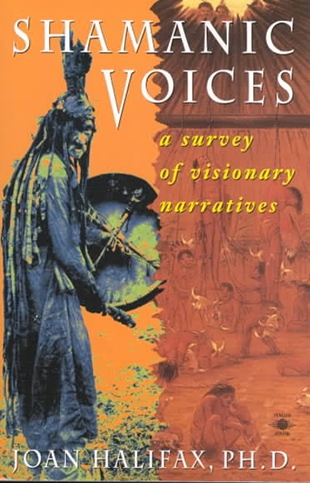Joan Halifax was trained as a medical anthropologist specializing in psychiatry and religion and did field work in the Caribbean, North and Central Africa, North America, and Mexico. The narratives in this book were collected from indigenous people in South America, Africa, Australia, Siberia, and Alaska. They are all part of the ancient tradition of shamanism which the author defines as "an ecstatic religious complex of particular and fixed elements." Halifax describes shamans as specialists in the human soul who also possess skills that make them healers, seers, and visionaries.
These resilient individuals undergo difficult initiation ceremonies, quests in the wilderness, and encounters with death. "Balanced between worlds, the shaman teaches by powerful example that illness can be a passageway to a greater life where there is access to great power and risk."
Whether reflecting on women shamans, androgyny, the rattle, or the songs and chants of these intermediaries, Halifax celebrates the important roles they played in the health and healing of their communities. The visionary narratives in the book also lift up the sacred actions of shamans.
